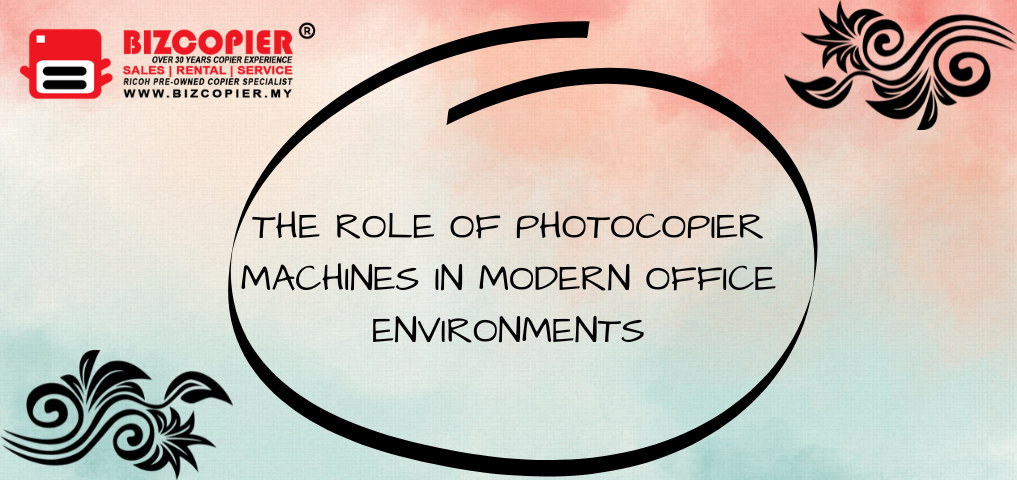
The Role of Photocopier Machines in Modern Office Environments
In the bustling landscape of modern offices, where the demand for efficiency and productivity is paramount, few tools have stood the test of time quite like the photocopier machine. From its inception as a humble duplicating device to its current status as a multifunctional hub of document reproduction, the photocopier has continuously evolved to meet the changing needs of businesses. In this article, we explore the enduring significance of photocopier machines in contemporary office environments. A Brief History The concept of photocopying traces its roots back to the 20th century, with Chester Carlson’s development of xerography in the late 1930s. This groundbreaking invention paved the way for the commercialization of photocopier machines, culminating in the launch of the Xerox 914—the world’s first plain-paper photocopier—in 1959. Since then, photocopier technology has undergone remarkable advancements, transitioning from analog to digital systems and incorporating features such as scanning, printing, and networking capabilities. Facilitating Efficiency At its core, the primary function of a photocopier machine is to duplicate documents quickly and accurately. This capability is invaluable in office environments where the need to disseminate information efficiently is constant. Whether it’s copying meeting agendas, reports, or presentations, the photocopier streamlines the reproduction process, saving time and reducing the likelihood of errors. Moreover, modern photocopiers offer additional features such as automatic document feeders, duplex printing, and collating options, further enhancing productivity. Versatility and Functionality What sets contemporary photocopiers apart from their predecessors is their versatility. Gone are the days when photocopiers were limited to just making copies. Today’s machines are multifunctional devices that combine the functionalities of printing, scanning, faxing, and even emailing into a single unit. This convergence of capabilities not only saves space but also eliminates the need for separate devices, reducing costs and simplifying workflow management for businesses. Enhanced Quality and Precision Advancements in digital technology have significantly improved the quality and precision of document reproduction. Modern photocopiers can produce high-resolution copies with crisp text and vibrant graphics, ensuring that the duplicated documents are indistinguishable from the originals. Moreover, features such as image enhancement and automatic color correction further enhance the output quality, making photocopiers indispensable tools for maintaining professional standards in office communications. Adapting to Changing Needs As the nature of work continues to evolve, photocopier manufacturers are continually innovating to meet the changing needs of businesses. Cloud connectivity, mobile printing, and advanced security features are just a few examples of the latest advancements in photocopier technology. These innovations not only enhance convenience and accessibility but also address concerns related to data privacy and document security, ensuring that photocopiers remain relevant in an increasingly digital-centric world. Conclusion In conclusion, the photocopier machine remains a cornerstone of modern office environments, facilitating efficiency, versatility, and precision in document reproduction. From its humble beginnings as a simple duplicating device to its current status as a multifunctional productivity hub, the photocopier has evolved to meet the evolving needs of businesses. As technology continues to advance, photocopiers will undoubtedly continue to play a vital role in streamlining office operations and enhancing productivity for years to come. *Other Model Available RICOH MPC3503/ MPC5503 | RICOH MPC3504/ MPC5504 CONTACT US: 03-3341 6296 | 018-788 6296 | 018-228 6296



Recent Comments